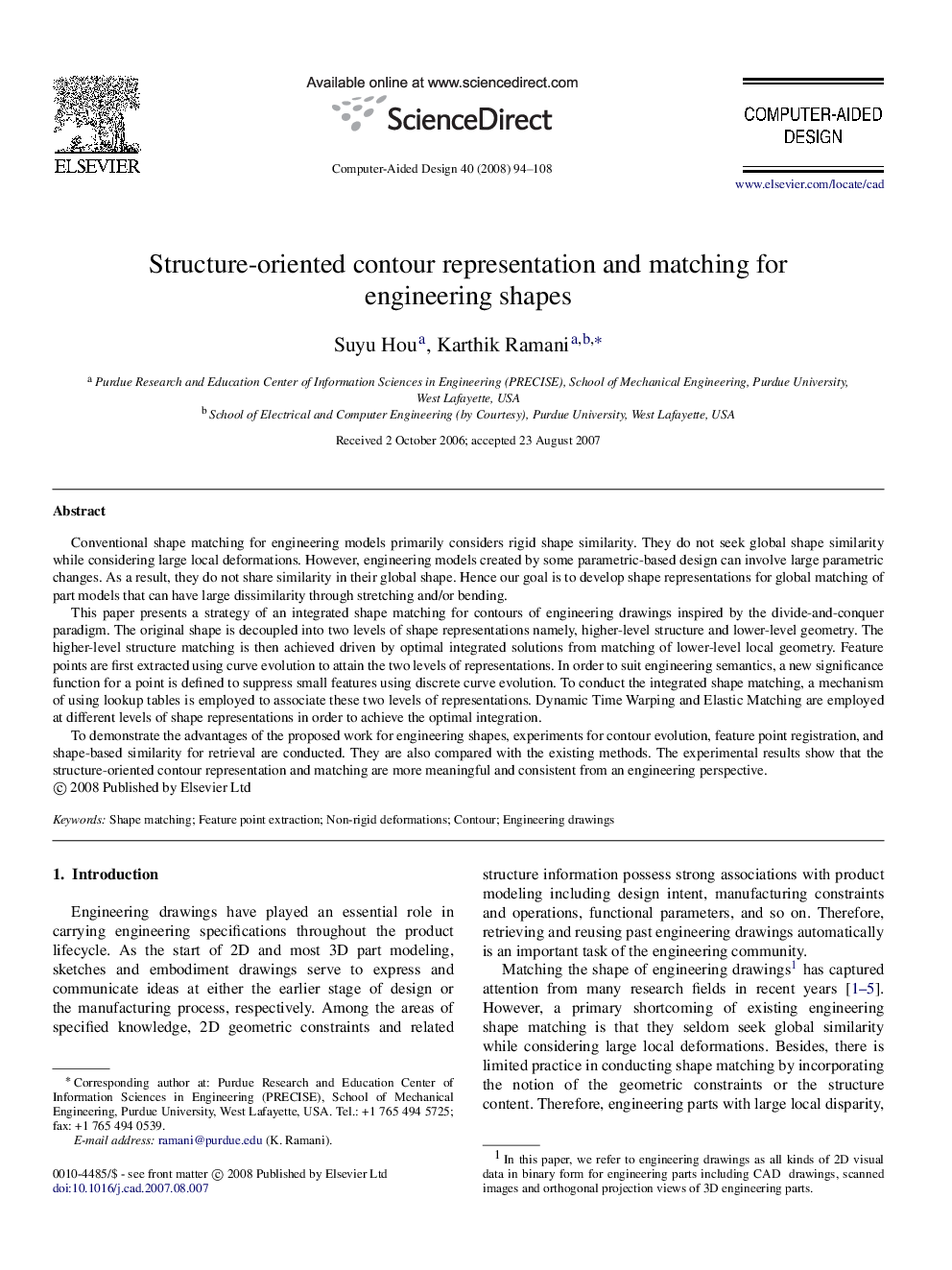| Article ID | Journal | Published Year | Pages | File Type |
|---|---|---|---|---|
| 439888 | Computer-Aided Design | 2008 | 15 Pages |
Conventional shape matching for engineering models primarily considers rigid shape similarity. They do not seek global shape similarity while considering large local deformations. However, engineering models created by some parametric-based design can involve large parametric changes. As a result, they do not share similarity in their global shape. Hence our goal is to develop shape representations for global matching of part models that can have large dissimilarity through stretching and/or bending.This paper presents a strategy of an integrated shape matching for contours of engineering drawings inspired by the divide-and-conquer paradigm. The original shape is decoupled into two levels of shape representations namely, higher-level structure and lower-level geometry. The higher-level structure matching is then achieved driven by optimal integrated solutions from matching of lower-level local geometry. Feature points are first extracted using curve evolution to attain the two levels of representations. In order to suit engineering semantics, a new significance function for a point is defined to suppress small features using discrete curve evolution. To conduct the integrated shape matching, a mechanism of using lookup tables is employed to associate these two levels of representations. Dynamic Time Warping and Elastic Matching are employed at different levels of shape representations in order to achieve the optimal integration.To demonstrate the advantages of the proposed work for engineering shapes, experiments for contour evolution, feature point registration, and shape-based similarity for retrieval are conducted. They are also compared with the existing methods. The experimental results show that the structure-oriented contour representation and matching are more meaningful and consistent from an engineering perspective.
